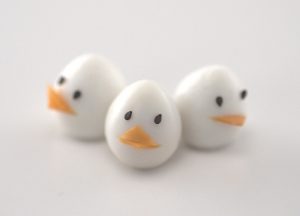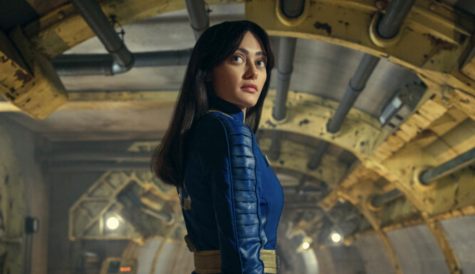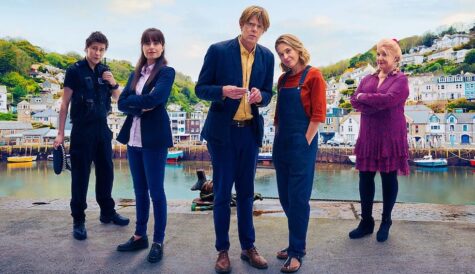Kids TV seriously
Today’s kids have an endless array of entertainment choices. From Disney, Nickelodeon and Turner Broadcasting TV channels to films, music videos, social media and console & casual gaming, there’s enough compelling content out there to occupy them 24/7. Is there a place for factual programmes in that mix? Andy Fry investigates
The overwhelming majority of kids factual content is and always has been funded by a stalwart band of public broadcast groups and organisations with a cultural/charitable mission.
The distinction is not so clear-cut in preschool, where shows like Nick Jr.’s Dora the Explorer have strong educational elements embedded within them. But if you want to find an ongoing commitment to educational content for preschoolers you need to be looking at the likes of Sesame Workshop and PBS Kids.
The latter’s VP of children’s programming Linda Simensky’s job is all about commissioning kids shows for 2 to 8 year-olds that fulfil educational objectives. But Simensky, a former employee of both Nick and Cartoon Network, says that this is only possible if you inject the same kind of excitement on offer at the commercial networks: “This age group is a great audience because they really love to learn… they’re in constant discovery mode, but that doesn’t mean you can lecture them. The same basic rules about story and character apply in educational programming just as much as in entertainment TV.”
Shows she is particularly proud of include Dinosaur Train (pictured, right) from Henson and Peg + Cat, from The Fred Rogers Company. “Peg + Cat is a preschool animation series that specifically sets out to tackle maths. What makes it stand out is that it has creatives who are really passionate about the show. [The show’s co-creator] Jennifer Oxley loves maths and that came through in the pitch. If you can get that passion from the creators, you have a good chance the kids will be excited too.”
For Simensky, the use of animation seems more appropriate than factual programming when dealing with the younger end of the kid market: “I’ve no real sense that documentary or magazine shows would work for this age range,” she says. “If we had a specific educational topic we wanted to tackle then we’d probably build a show or special around iconic characters like The Cat in the Hat, Curious George or Arthur.”
The closest Simensky comes to using real world characters is Wild Kratts, a series based around the exploits of wildlife experts Chris and Martin Kratt, which is produced by 9 Story Entertainment. “Here, you have a one minute live action sequence in which the Kratts present the theme of the episode and then it switches to live-action,” says Simensky. “At the end there’s another short live-action wrap up.”
This model works, says Simensky, because the Kratts are well-known through their previous series and are also active in the real world, going to zoos and meeting their fans. “I’d love to find other expert presenters who could carry through productions in this way,” she says.
Wild Kratts performs an educational role but is entertaining enough to export well, airing in Canada, Latin America, India, the Middle East and Europe. This is something that ZDF Enterprises is also attempting to achieve with a new wave of kids shows, says Arne Lohmann, VP at ZDFE.junior: “As a public broadcaster, it’s an important part of ZDF’s remit to deliver informative and education shows for children. So at ZDFE we’re looking at whether there is also some commercial potential.”
Lohmann says that it’s hard to educate kids through TV if there isn’t a compelling entertainment hook. “Part of what we’re doing is to create serious shows that connect to established or high-profile brands. For example, we went to MIPCOM with a show called Jungle Book Safari in which we mix animation from our Jungle Book series with real animal footage. We think Mowgli is a great character to introduce this kind of show because he is a small boy who is also going through his own kind of education.”
Also in ZDFE’s MIPCOM slate was a spin-off from Wolfblood, a drama copro between ZDF and the BBC. “In this case [the 10x12mins Wolfblood Uncovered], we are using the main characters from the drama to introduce a factual series about wolves,” says Lohmann.
Lohmann shares Simensky’s faith in established brands, but is more positive about the potential of factual programming – perhaps because he is dealing with older age groups than PBS Kids: “At MIPCOM we introduced Smart! That’s My Story,” he says. “This is a series of true life documentaries for children 10 to 12. In every story children describe the challenges they face in trying to achieve ambitions in areas like sport or music. It’s the first time the series has been in the catalogue so I am keen to learn what the market thinks.”
The urge to educate is also alive and well at Japanese public broadcaster NHK, where Junko Ogawa, head of global content marketing, says: “As much as we want to entertain our young audience, we also want to inform them about important aspects of life, the wonders of nature and the complexities of society.”
Some projects echo the cross-genre approach outlined by Simensky and Lohmann. The Kamaishi Miracle is a documentary that shows how children in the city of Kamaishi survived the 2011 tsunami. However, it uses animation to offer lessons on ways to prepare for natural disasters. Meanwhile, weekly series Knocking Out Bullying uses animation and celebrities to help children speak out about bullying. “It is set in a classroom and features a member of an all-girl pop group,” says Ogawa. “A cartoon character created for the programme shows scenes of the kind of classroom bullying that can be seen anywhere and asks the celebrity what they feel. All the questions are meant to encourage kids to discuss issues involved.”
In addition, however, NHK has proved it is possible to make factual series that engage kids with curriculum-based content. Examples include Discover Science, a science entertainment show that helps young viewers understand the theories of science by showing them in action in ridiculously huge experiments and Design Ah!, which helps children understand design by showing them objects and ideas from various perspectives. These shows are among NHK’s E-Creative programmes.
Ogawa says: “We are finding there is a strong international demand for Discover Science and Design Ah! When NHK came up with the idea of Discover Science, our goal was to combat the fact that children were rapidly losing interest in science at schools. When we pitched it internationally we found this problem existed in other countries. That’s probably why Discover Science has been sold to 15 countries and had so many partners [series one was coproduced by NHK/NHK Educational, JCC in Qatar, SWR/WDR in Germany, UR in Sweden and EBS in South Korea]. We definitely see demand for serious content, but recognise that it needs to be shown in a unique and fun way.”
This summer, the European Broadcasting Union and physics lab CERN handed out grants to help producers develop multiplatform projects that can inspire children’s interest in science. Recipients included Baby Cow and Bigfatstudio for an animated series called Cubic, in which robots explore physics through slapstick humour; and Screen Glue for Just for Quarks, a series of short films targeting the YouTube generation about a trio of teen pranksters that have the ability to alter the laws of physics. Commenting on them, Eurovision Media director Annika Nyberg-Frankenhaeuser says: “The best children’s programmes educate and inform without the viewer even being aware. These science-themed series will not only entertain children, they will hopefully also inspire a new generation of scientists and inventors.”
Saad Al Hudaifi, is acting executive general manager and channels director at JCC, and says serious content for kids is a crucial part of the mix at JeemTV, JCC’s kids channel for 7 to 12 year-olds. “JeemTV’s mission is to be the preferred children’s media experience provider in every Arab home,” he explains. “Our in-house production reinforces our commitment to safeguarding Arab culture while offering responsible yet universal content that educates and empowers Arab children, providing them the opportunity to unlock their potential. Titles include Anbar, The News Show, Noun, Shashatech, Tijan Alnour, Power Struggle and Science Capsule.”
Al Hudaifi says entertainment is critical to keeping kids engaged. In Anbar, for example, topics such as sport, nutrition, culture and games are discussed by a presenter, two puppets (Anbar and Lahouh) and special guests relevant to the episode’s theme. Shashatech, meanwhile, is “a technology-focused programme that keeps children up-to-date with the latest technologies around the globe. Tech-savvy guests are brought in to every episode.”
There is no reason why tough subjects can’t work for kids, says Al Hudaifi, if they are presented in the right way. While The News is a straightforward news magazine show, Power Struggle is “a reality gameshow in which eighty teens from across the Arab world take part in overcoming the challenge of preserving the environment.” Science Capsule, meanwhile, is “an animated educational show featuring two virtual hosts, Salem and Anis.
In each episode, Salem [a 3D boy] quenches the thirst for knowledge of the audience through the use of 3D holograms. In addition, Anis [a 3D flying robot] goes to real places where the subject of the show is being studied, since the young audience is interested in what is concrete and close-by.”
Increasingly, this kind of content needs to be backed up by second screen or social media, adds Al Hudaifi. “The modern needs of Arab children can only be catered for by offering a 360-degree proposition across platforms. Our research underscores the importance of digital platforms, because 49% of children watch TV content online. And it is not only about watching TV online, it is also about interaction. We recently launched a new jeemtv.net website that enables greater interaction between children and JeemTV at home and on the go – live streaming, video clips, full episodes of favourite shows and interactive competitions as well as games based on shows such as Anbar.”
Science, natural history and art seem to feature most strongly when it comes to educational content for kids. But UK-based indie Lion Television has also shown that history programming can work well with its multi-award winning series Horrible Histories. Based on best-selling books by Terry Deary, the programme is a sketch comedy series that airs in the UK on the BBC.
“The books set the tone for the series,” says Lion TV managing director Richard Bradley, who spends most of his time making history series for grown-ups. “Because the books are funny we knew that the TV series had to follow that lead. The books are also historically accurate, so that was another area upon which we couldn’t compromise.”
Bradley didn’t have any qualms about producing an educational series for kids because, he says, he knew they were fascinated by facts. “The real issue was making sure the quality of the series was good enough. Kids have so many entertainment choices that you can’t hope to succeed if you don’t match them. We put a lot of effort into making sure the writing, the songs and the performing was excellent.”
As an educational tool, Horrible Histories is proving popular with teachers and schoolchildren. But Bradley says it would be wrong to think that the series is trying to provide a comprehensive view of the curriculum. “The point about a series like this is that it sparks curiosity in the subject. It’s then up to the audience to decide if they want to pursue their interest further.”
Simensky, agrees and says her job is “not about teaching, but about role-modelling. We’re helping kids get excited about education and asking questions. Once they know how to interact or have a conversation they can develop enthusiasm for any topic.”
If Bradley has a disappointment it is that Horrible Histories has not yet taken off in a big way internationally.
“We’re optimistic that we will start to see some progress, but the thing we’ve learned is that not all countries are able to laugh at their history. In some cases, that’s because recent events are still too painful. In others it’s that there is no culture of laughing at the past. The Americans don’t laugh at their presidents in the way the British laugh at their kings and queens.”
One thing that most agree on is that kids need tailored programmes. In part, this is because the language of adult programming is often too complex. But it’s also because the imagery can be too graphic, adds ZDFE’s Lohmann: “In an area like wildlife, you don’t want young children to see raw predator behaviour.”
That said, it is possible to create spin-offs aimed at kids, says Lohmann: “We are looking at doing a spin-off of a documentary series right now – we’re just deciding exactly the right way to do it.”
This approach is endorsed by NHK’s Ogawa: “We recently aired a kid-focused spin-off from our wildlife series Life Force [a copro with NHNZ]. Life Force is a six-part series that transports viewers to six strange worlds within worlds, where it seems as though nature has thrown the rulebook out the window. In the Japanese version we used a popular actor and singer Masaharu Fukuyama as host.”
For the kids spin-off, NHK did a 49-minute talk show with 100 children in a studio. The show centered on Fukuyama, a wildlife professor, and an MC. Everyone watched segments of the series, and Fukuyama talked about his on-location experiences. The programme was aired in primetime during the summer holidays and, Ogawa says, “succeeded in showing children the wonders of nature in their own language and tone”.
There’s also a view that educational programming for kids works best when it’s interesting enough to appeal to adults as co-viewers. Wild Kratts, Horrible Histories and Discover Science all garner adult engagement and endorsement that gives children a sense of belief that what they are watching is good for them.
“If parents watch shows with their kids they’ll talk about the topic,” says Simensky. “There’s no doubt that seal of approval is important.”
BBC Kids executives on the uk pubcaster’s approach to factual
A panel of the BBC’s top children’s TV execs* talk about the UK public broadcaster’s approach to kids factual programming
What kind of serious shows does the BBC produce for kids?
News, factual and documentary programing is what sets CBeebies and CBBC apart from other UK children’s channels, and much of our factual content is among our best performing content. Andy’s Wild Adventures, Deadly 60 and Horrible Histories are all huge brands.
Looking at one show in more detail, Fierce Earth is a science series that fuses archive footage, experiments, experts and personal stories – each episode exploring awesome natural phenomenon.
How do these shows cut through when kids have so many choices?
Most children actively want to discover things and take away inspiration from their viewing. For example our My Life documentary strand is one of the best performing shows for CBBC this year.
Interestingly, audience research suggests that science is one of kids’ least favourite subjects, therefore the challenge with Fierce Earth was to make a science show without our audience thinking they were learning. In that case, we focused on extreme weather, which we know our audience is fascinated by, but made each episode in the style of a survival guide.
We also have Super Human Challenge, a human biology show, packaged as a large scale, international series about real people with super human abilities. The stunts are dangerous, ambitious and on a grand scale.
Can we have faith that our children still have a thirst for knowledge?
Yes. Our best performing UK factual content is led by facts, world-class storytelling and amazing pictures. That said, with any audience regardless of age, the more you can deliver that knowledge in a glossy, ambitious, entertaining and exciting way, the better. Super Human Challenge’s visuals are fast paced, exciting and the graphics are sophisticated. Graphics on science shows need to compete with high-end special effects on computer games. The effects on Super Human Challenge are the same fast cut, layered graphics used in sports packages.
How important is second screen these days?
Ideally the brand lives on all multimedia platforms. From the outset with Fierce Earth, we knew that Leo Houlding’s climbing stunts would be a huge draw for our audience. We therefore decided during shooting, that we would create diary cam content for the website.
For Super Human Challenge, we have a Flash based quiz and gaming application that allows our audience to test their skills against the show’s presenter.
Is there an international market for these shows out there?
Factual shows are something many broadcasters produce locally so the challenge has always been to find shows that compliment local output, but also compete with it in the international market. As a result, both Fierce Earth and Super Human Challenge take a global view of their respective topics. Likewise, Andy’s Dinosaur Adventures is epic in its execution but, at the same time, manages to focus on small but important information on dinosaurs. Using footage from Walking with Dinosaurs, it places Andy at the centre of the dino’s world to give a new perspective on what their lives were like.
Is there a need for kid-specific factual shows?
There is more need than ever for factual content shaped around the understanding and concerns that kids have.
Our daily news show for kids, Newsround, is a cornerstone of our public service content as it engages children with real events in the world. To my mind [Joe Godwin], the need for content like this is greater in today’s worlds than it was when I was a kid.
*Panel comprised: Joe Godwin, director, BBC Children’s; Sam Lewens, creative director, CBBC; Louise Corbett, executive producer, Super Human Challenge; Nathan Waddington, children’s genre manager, BBC Worldwide; and Sara Harkins, creative director, Children’s, BBC Scotland.











